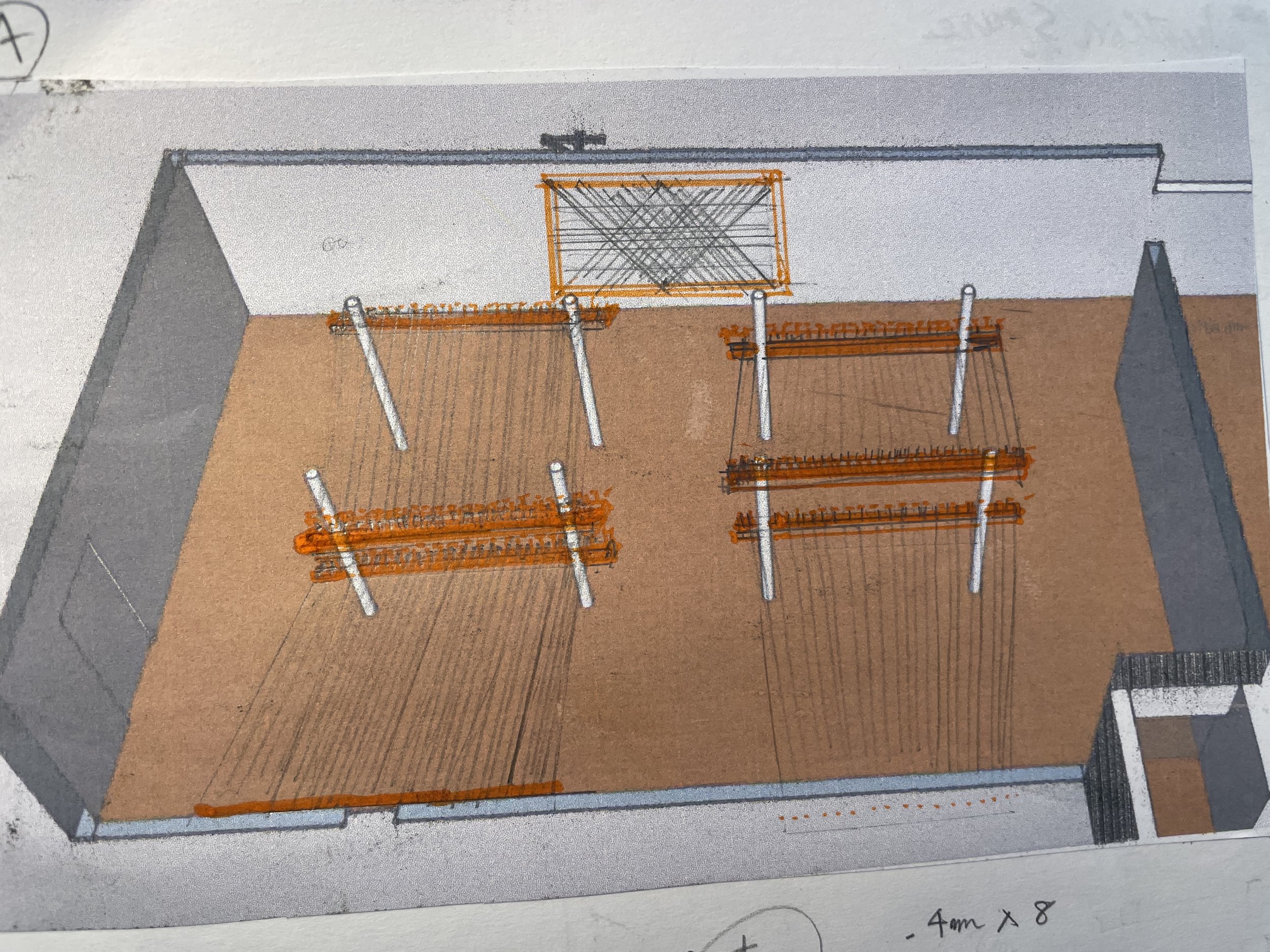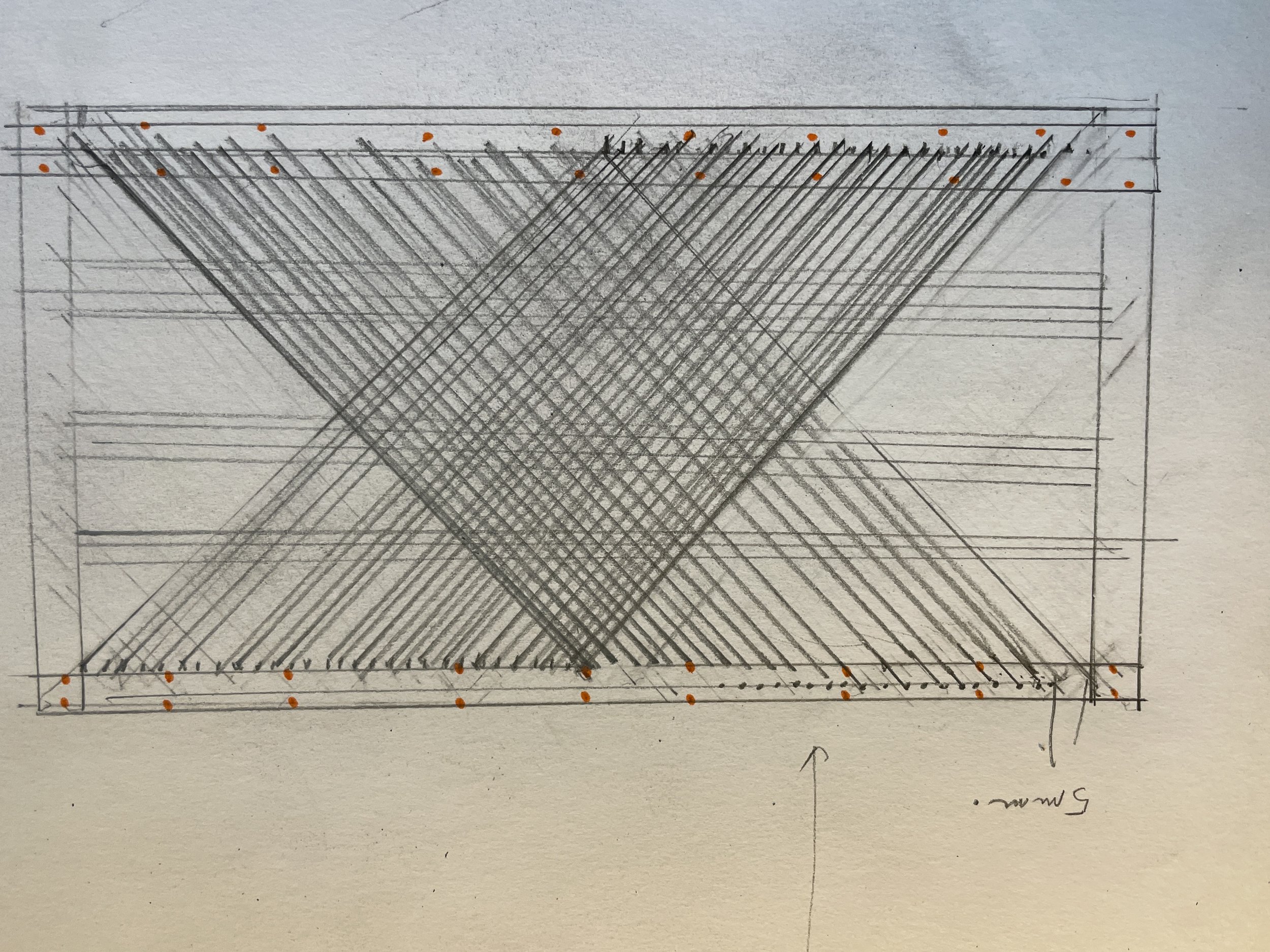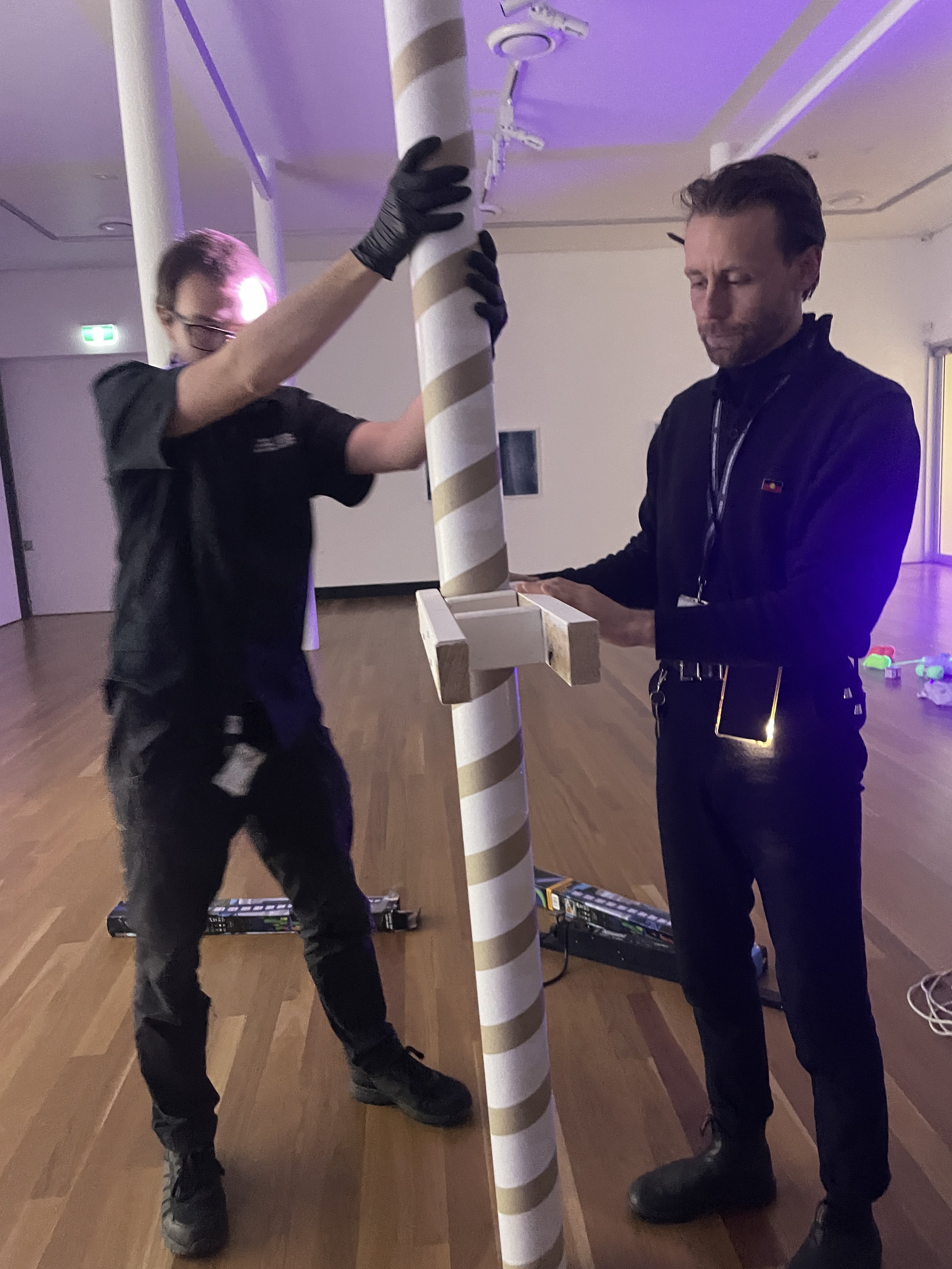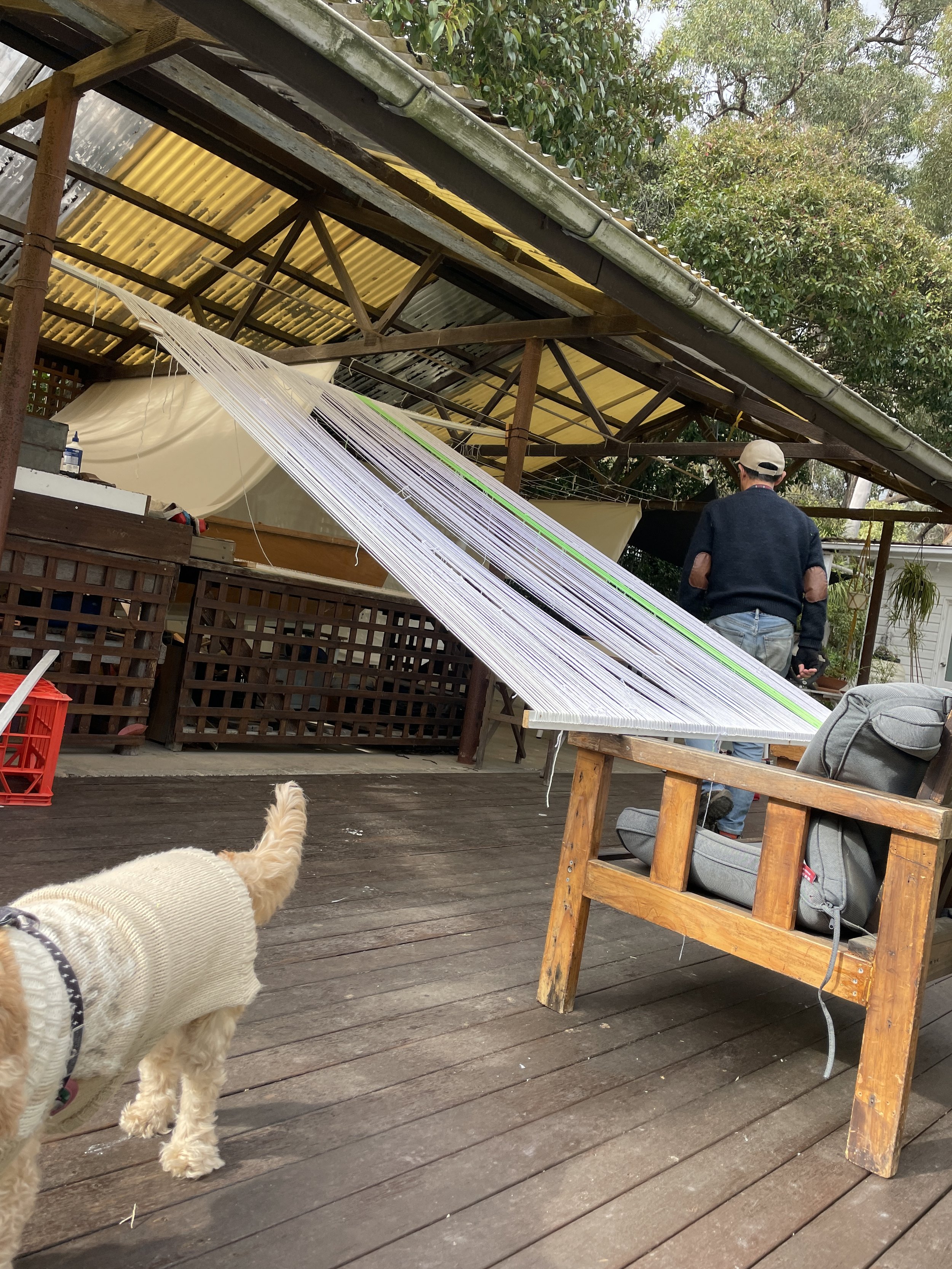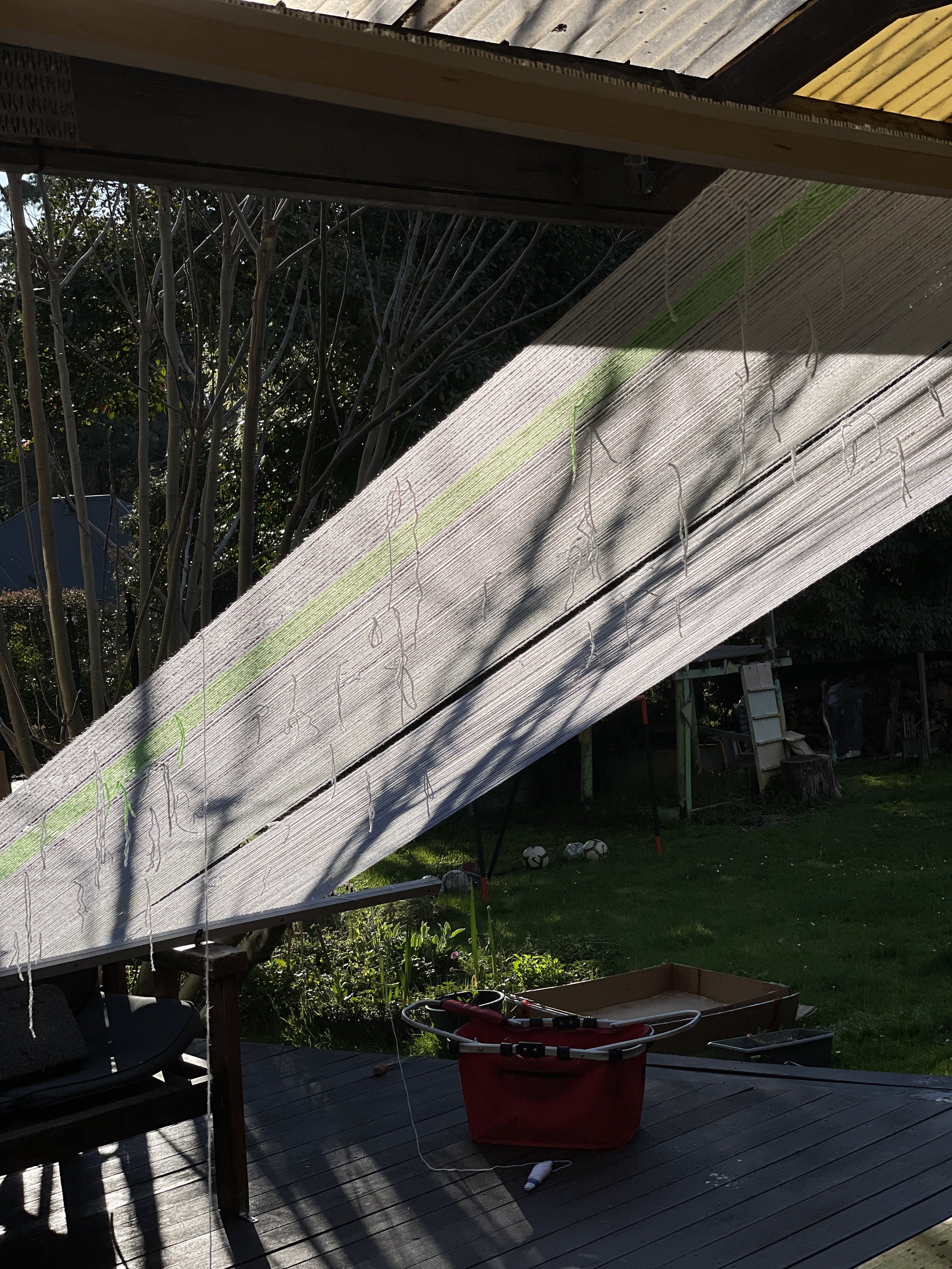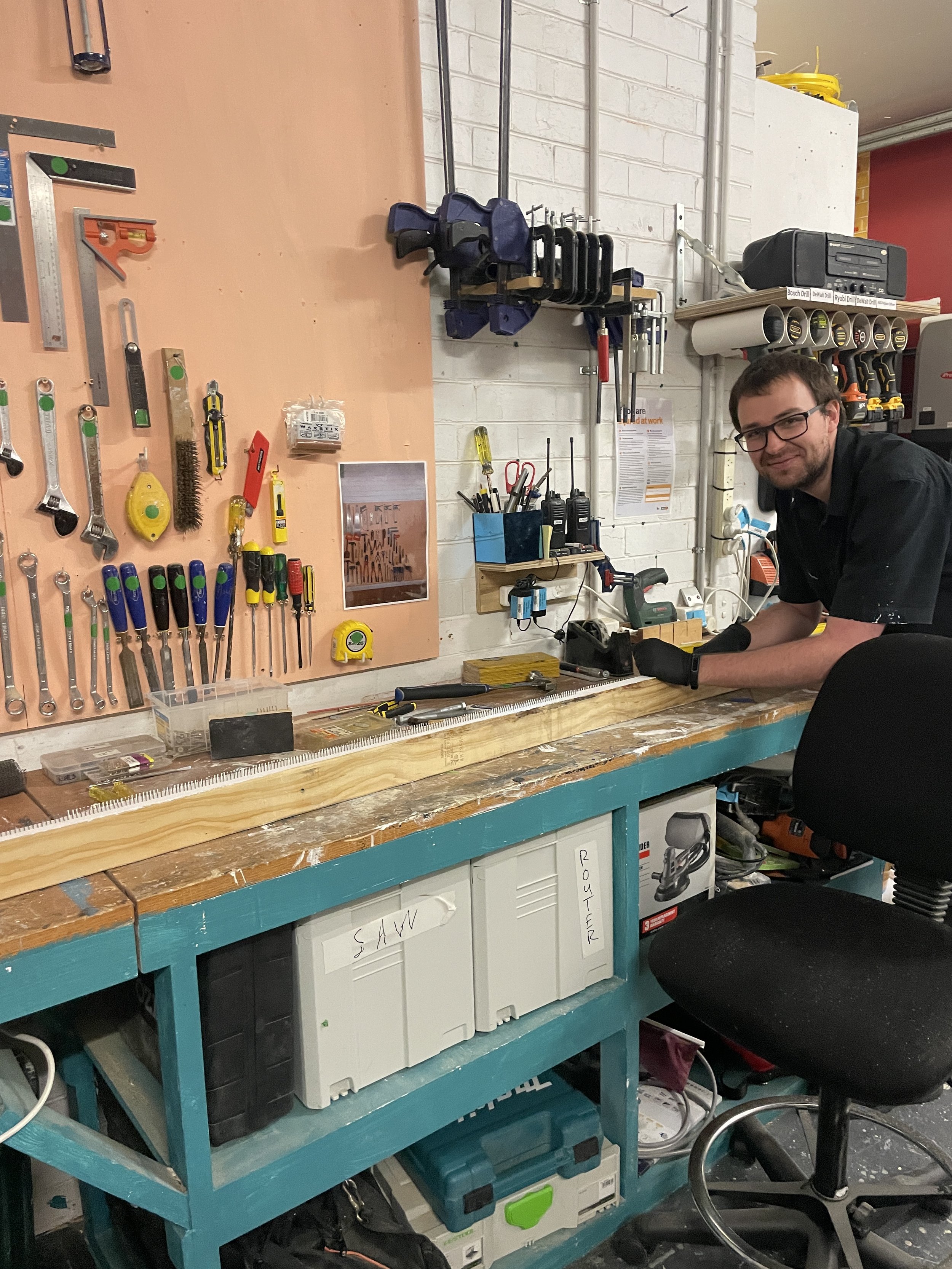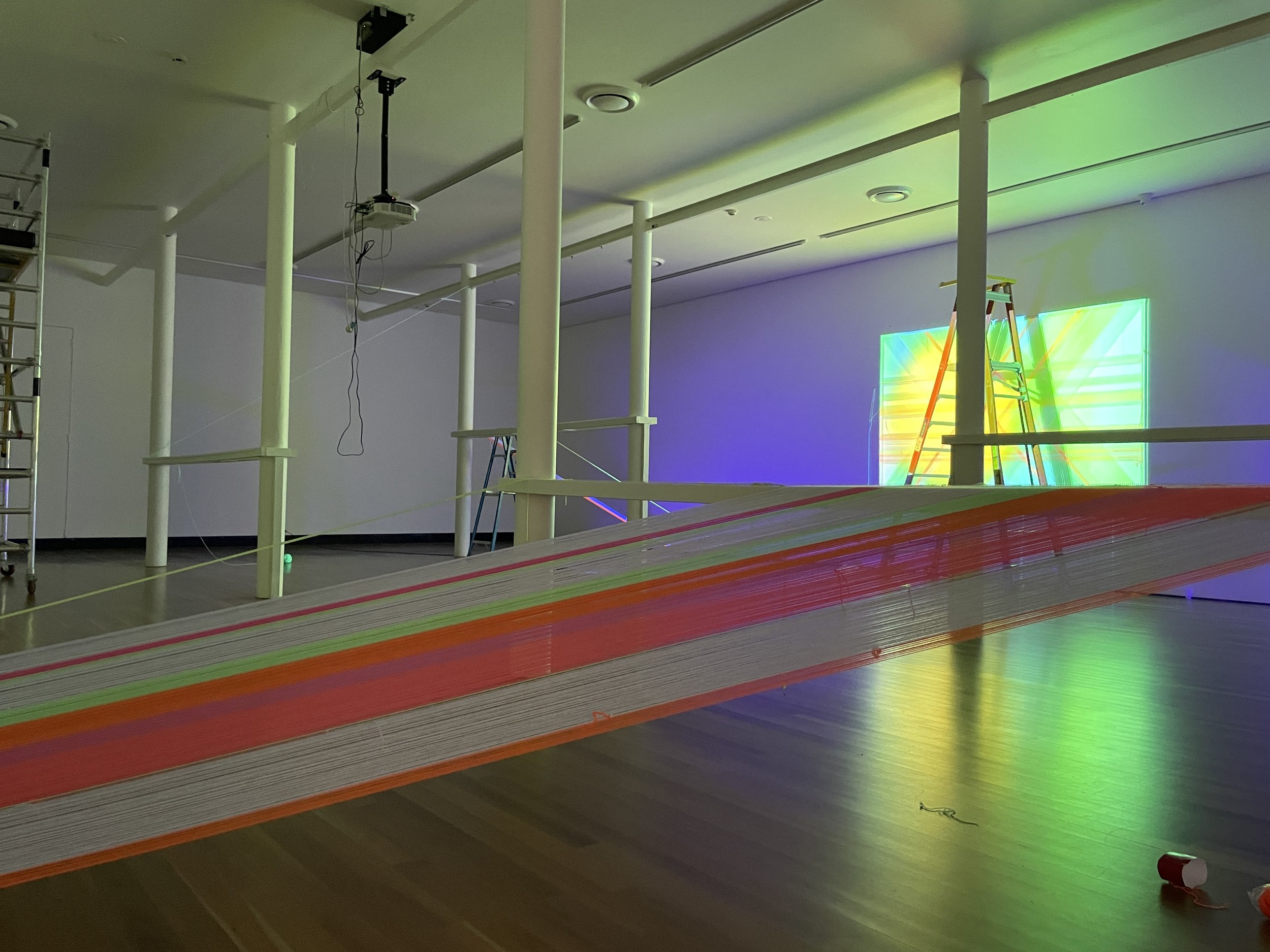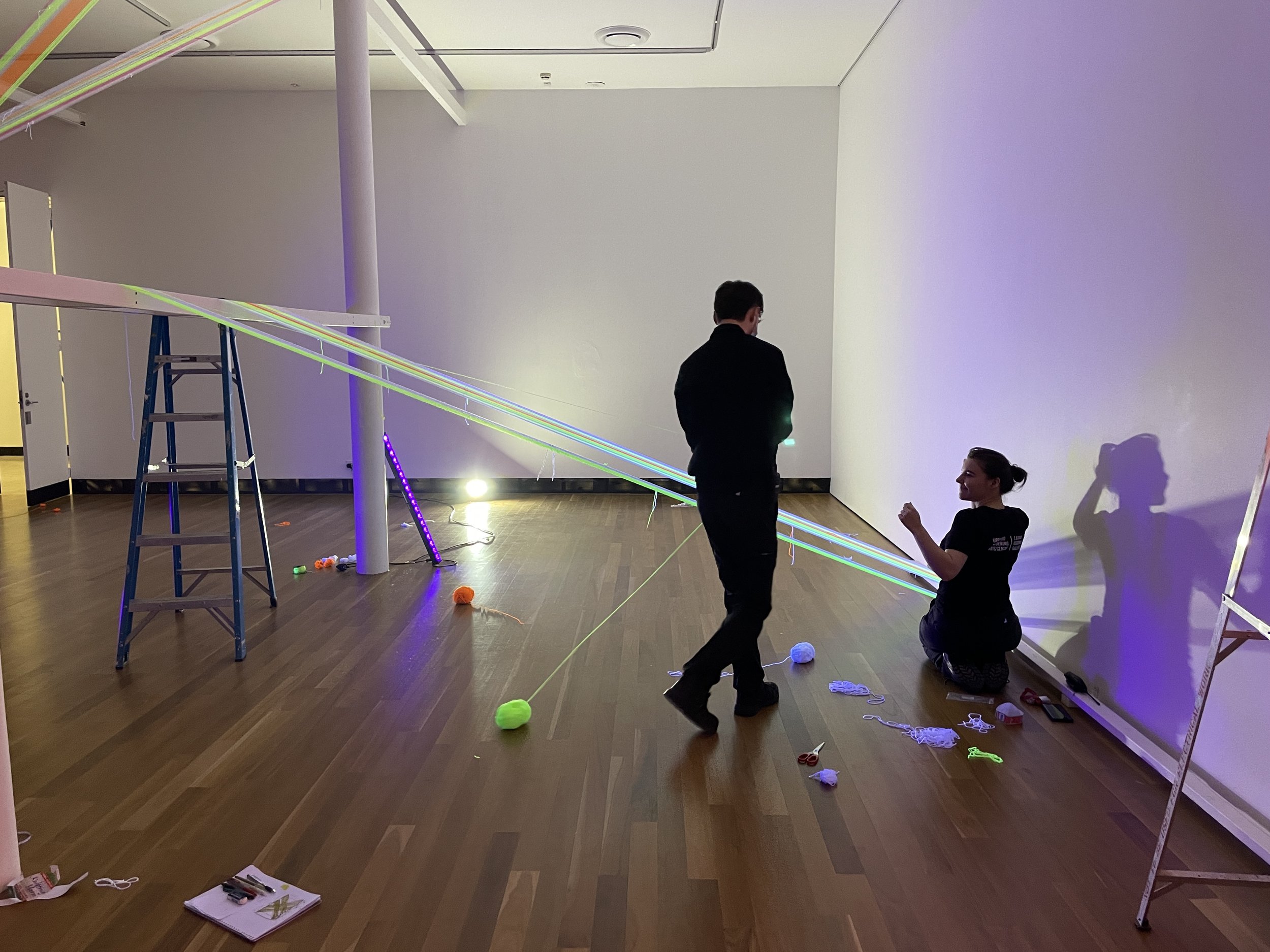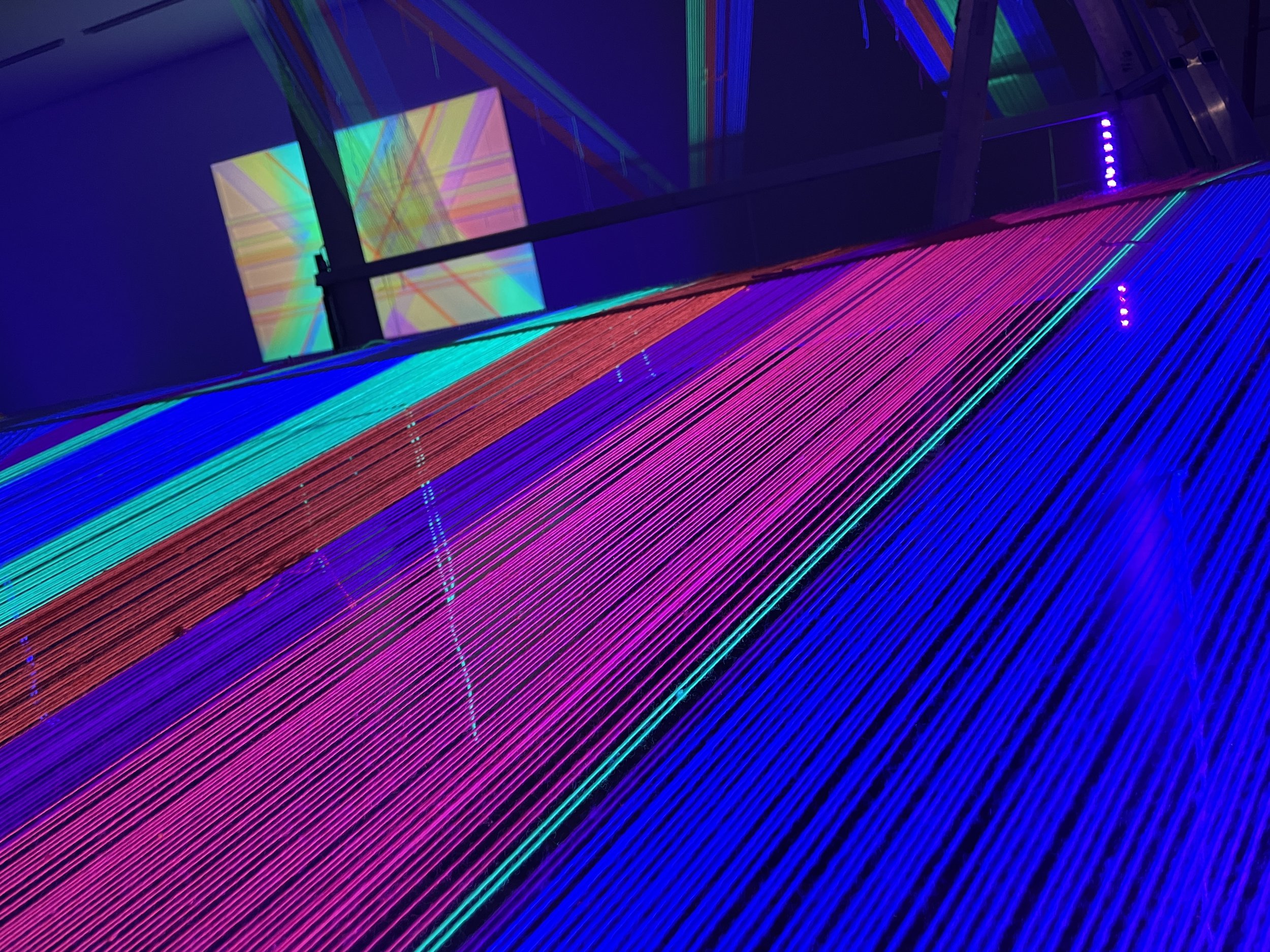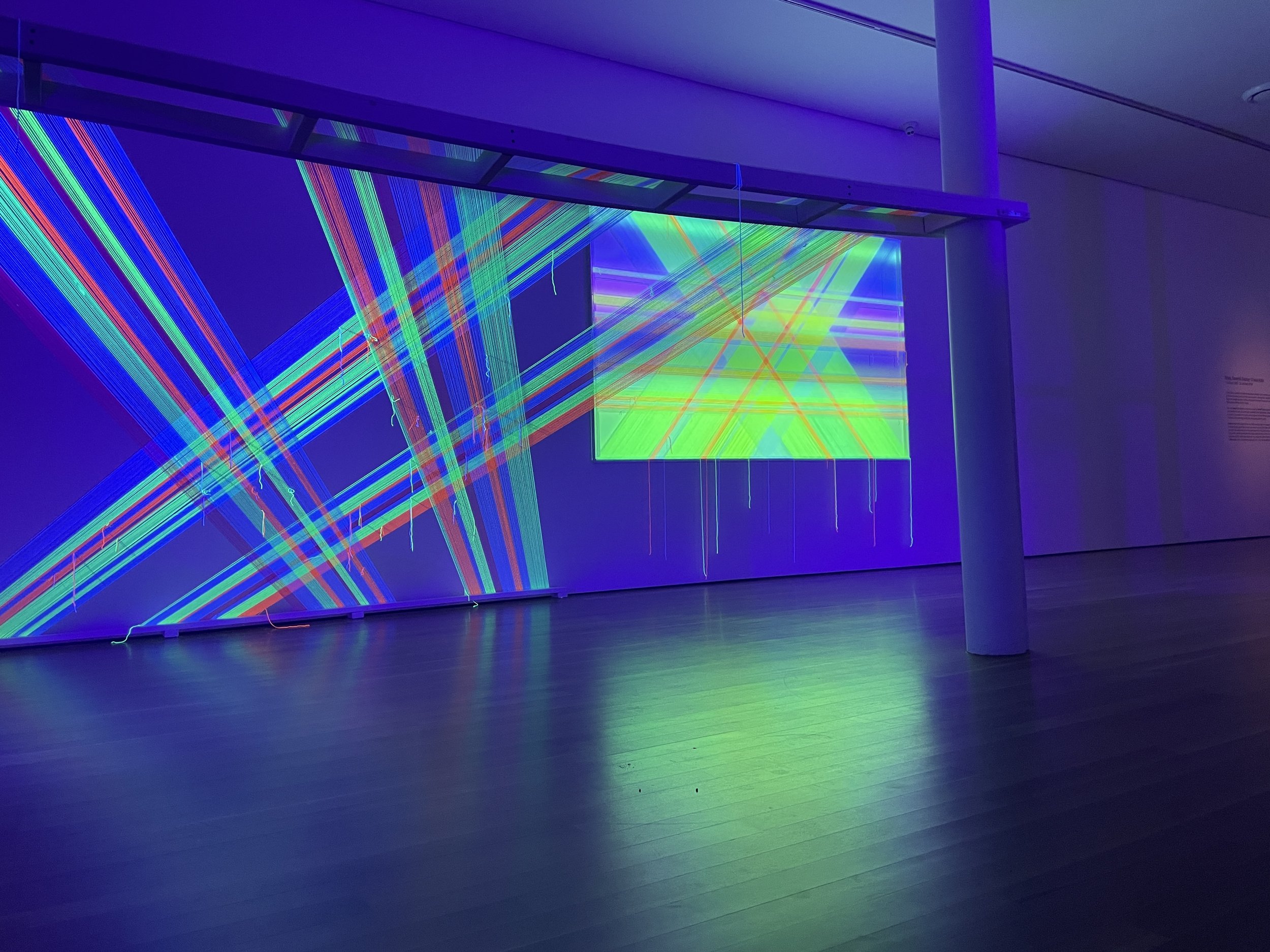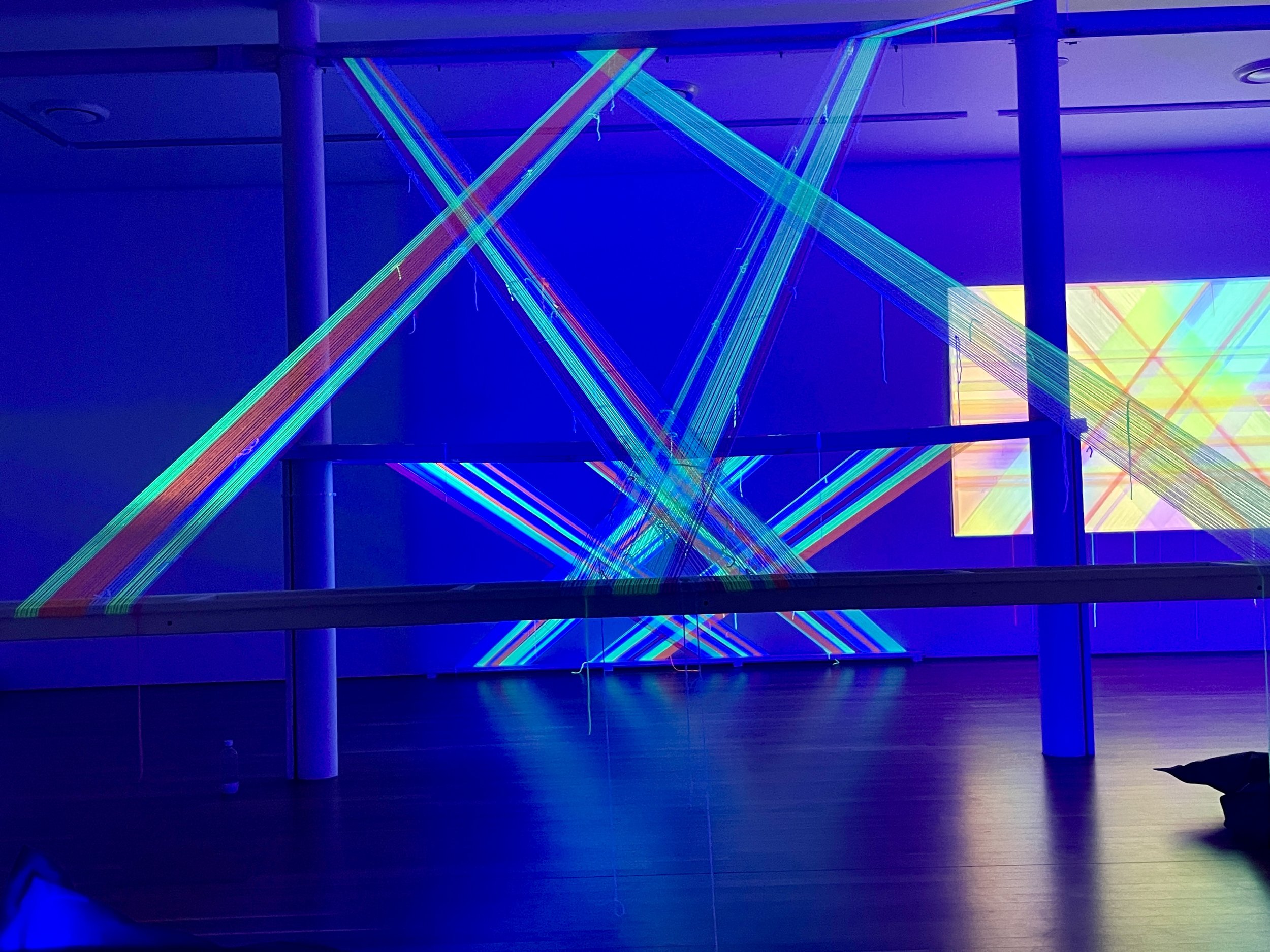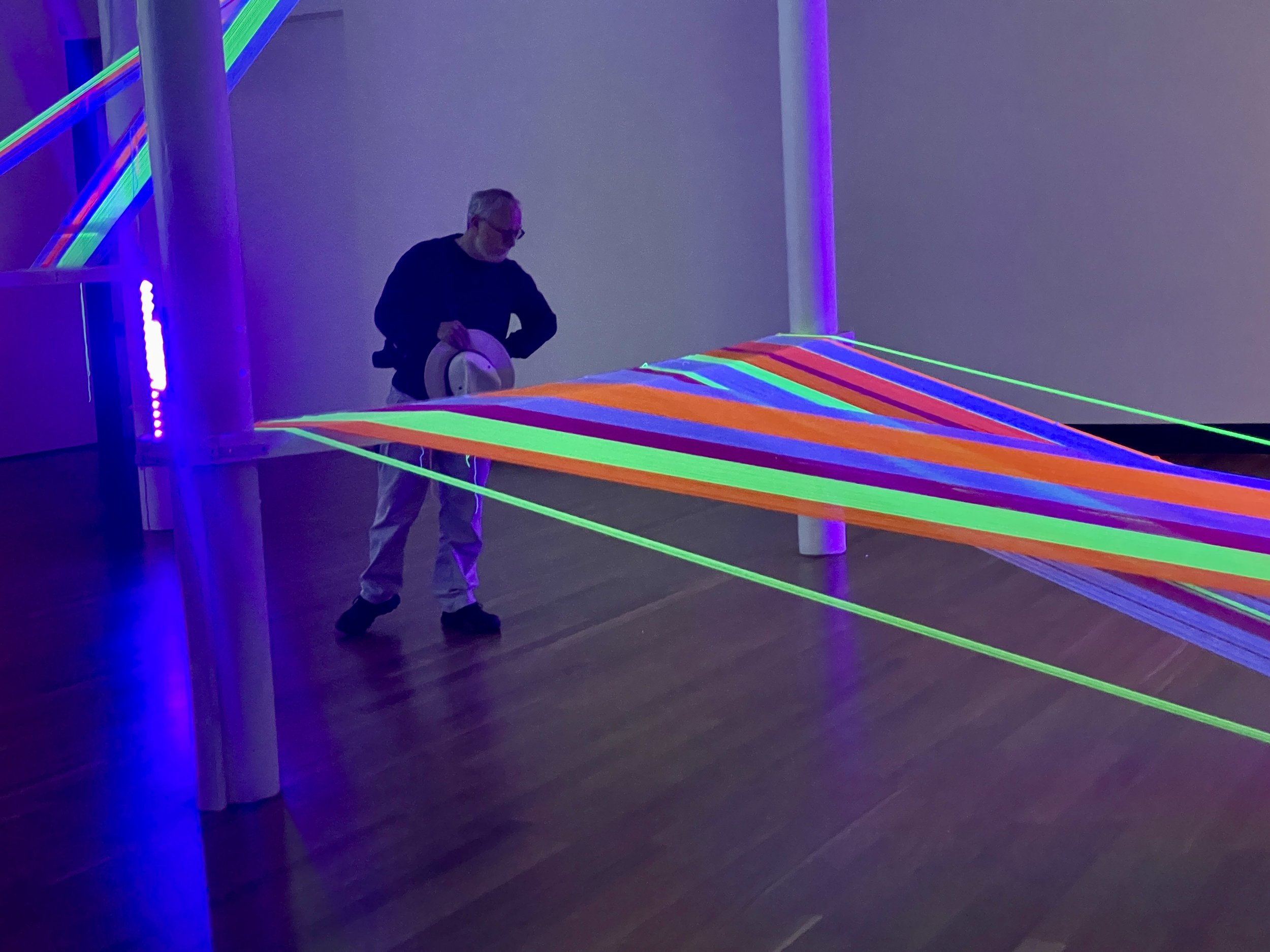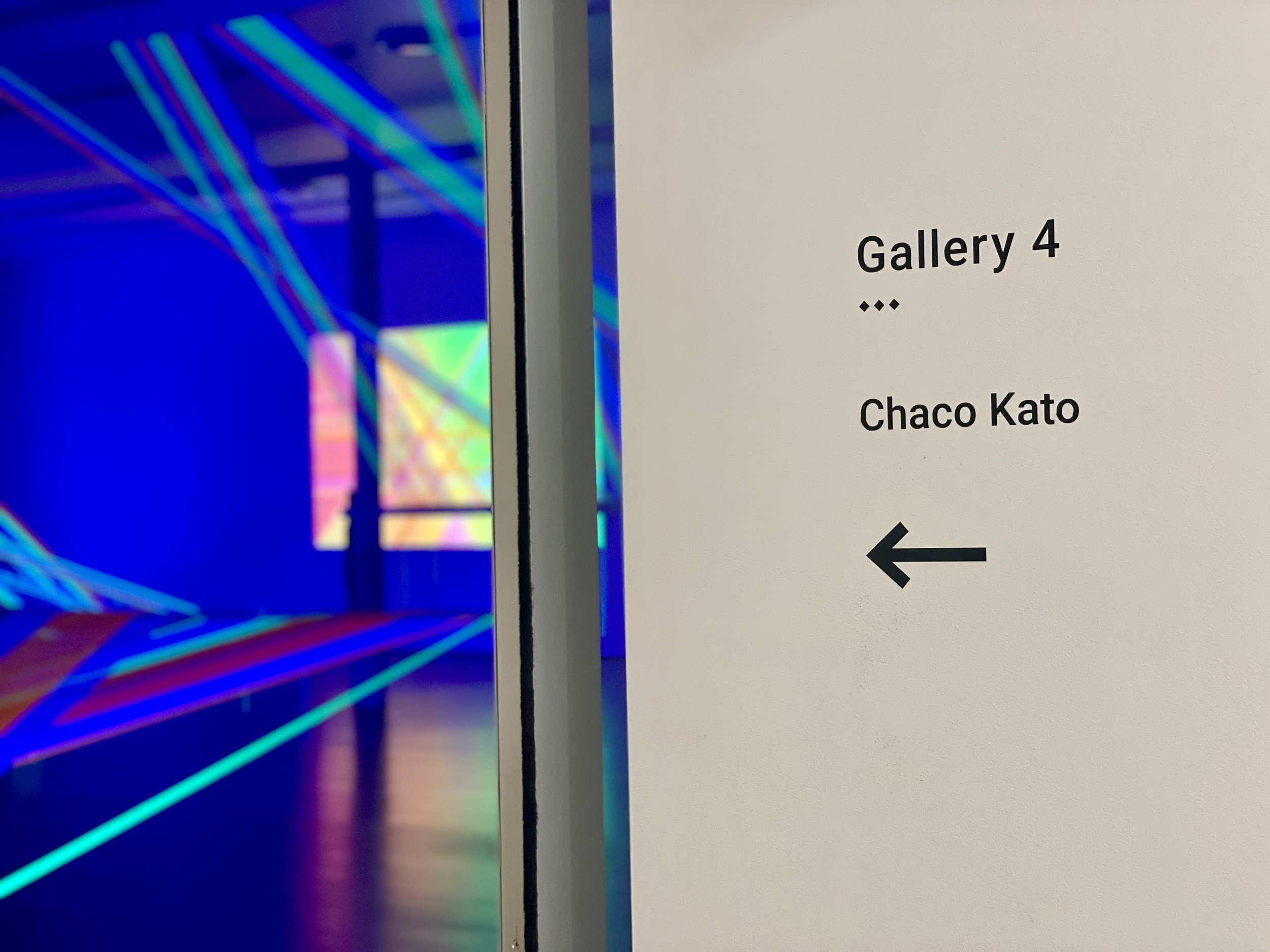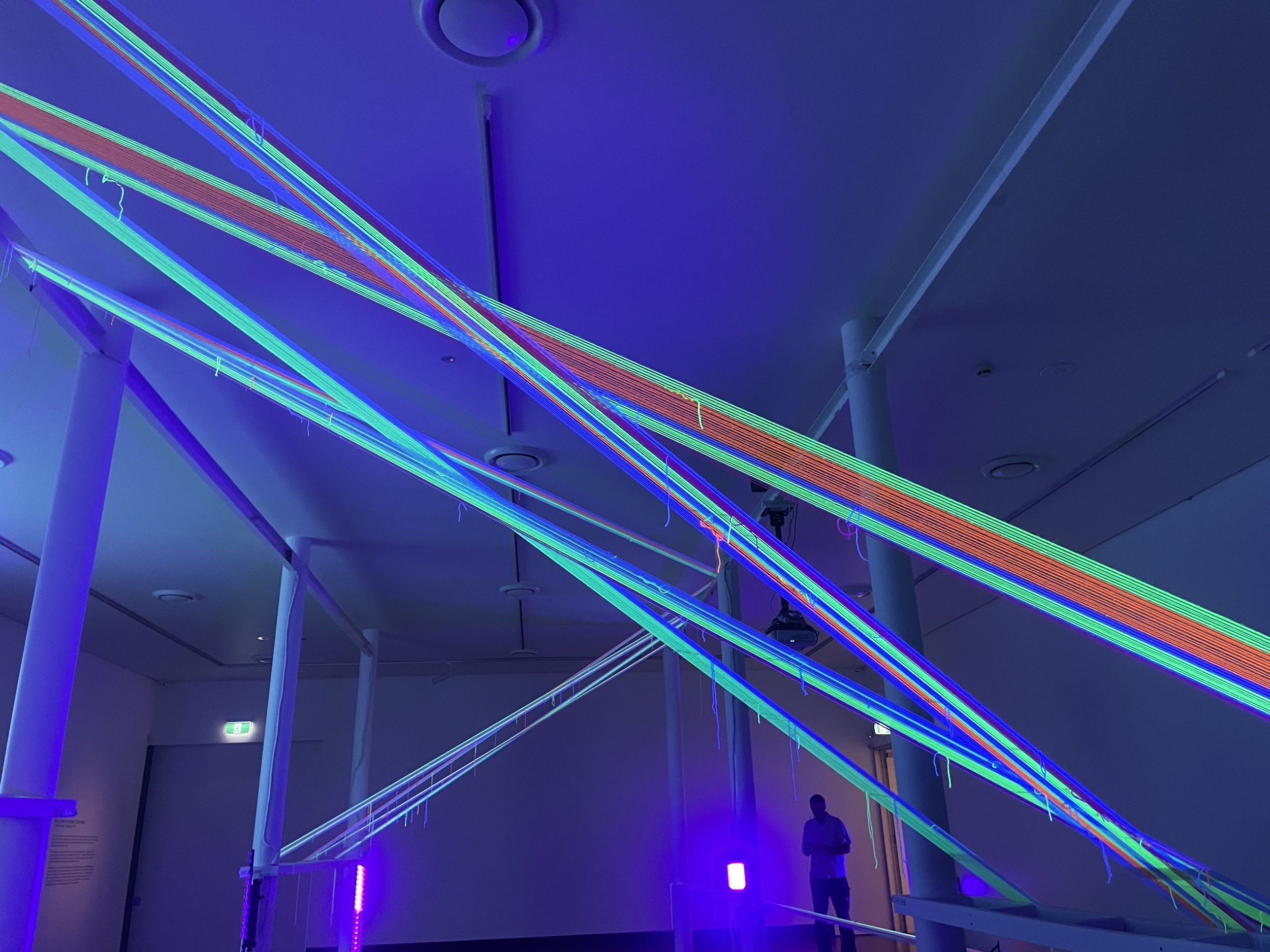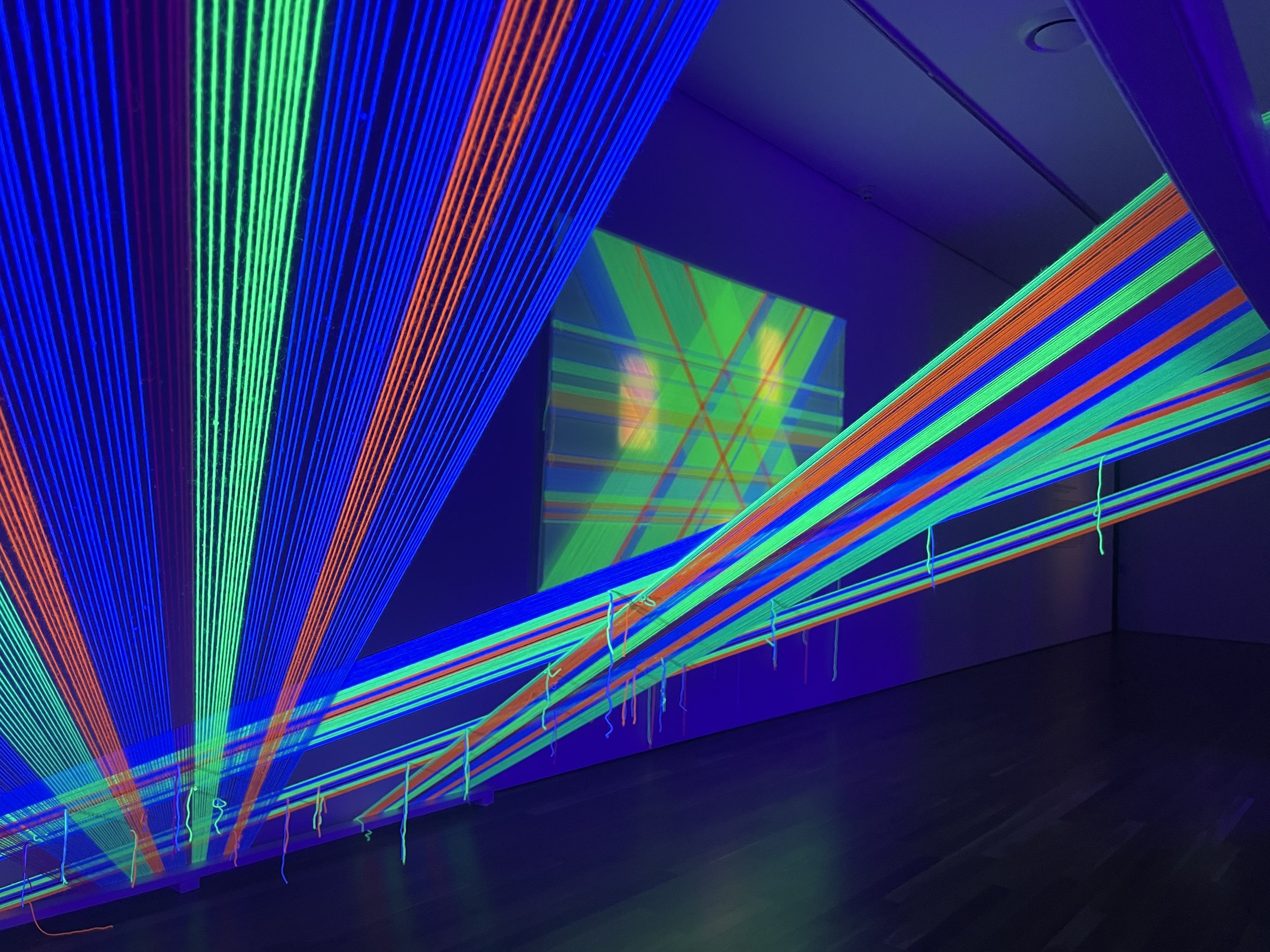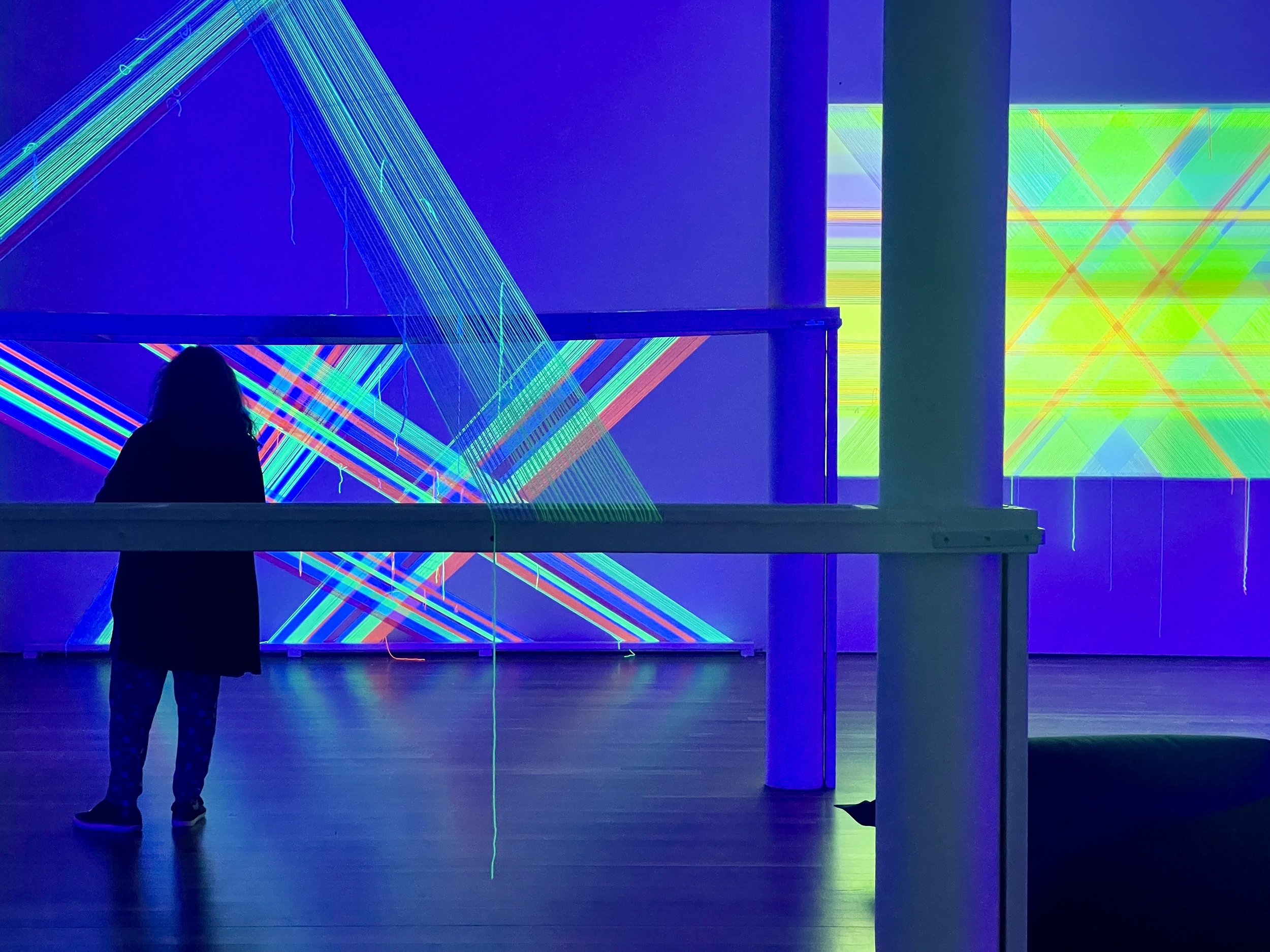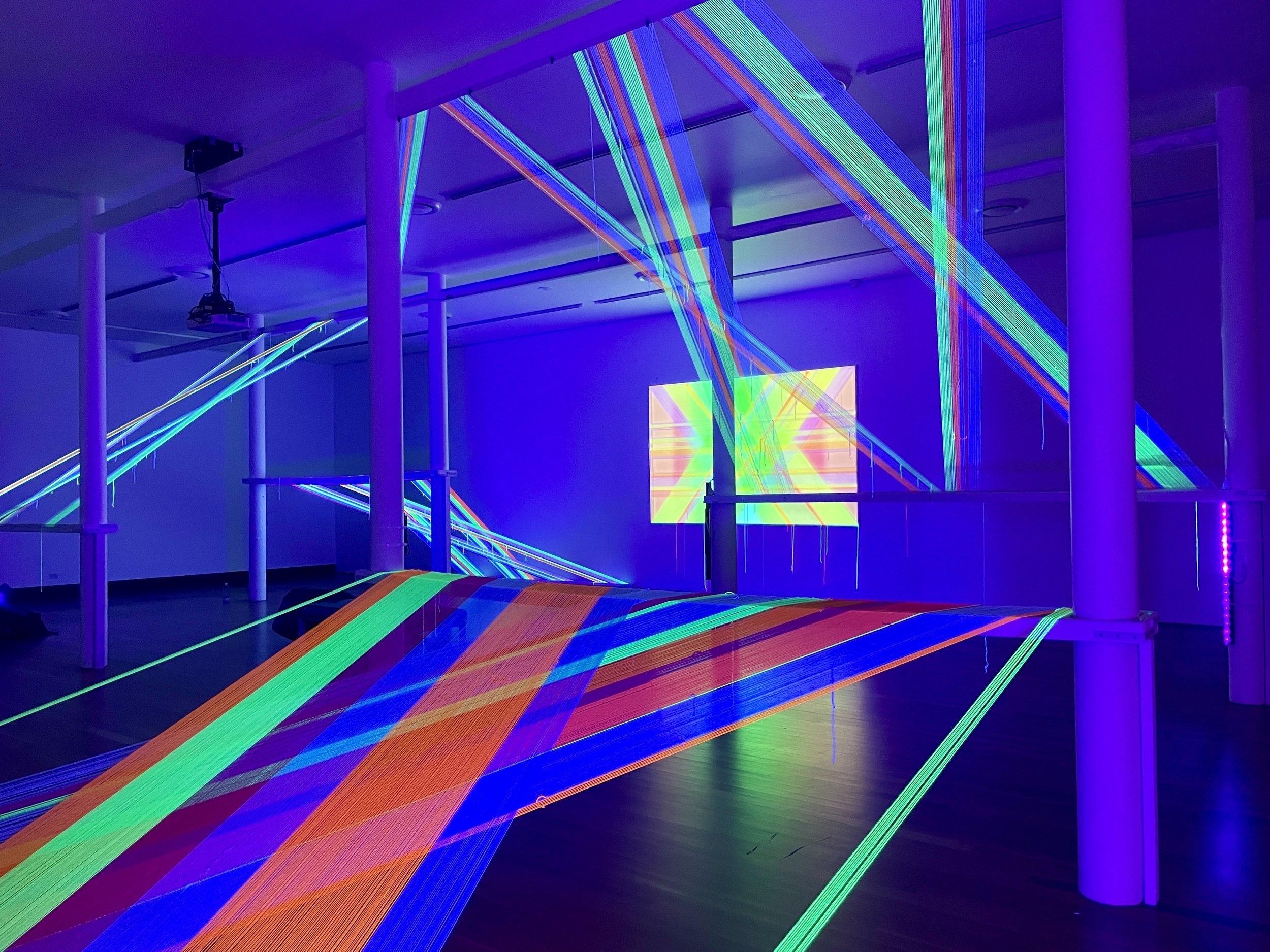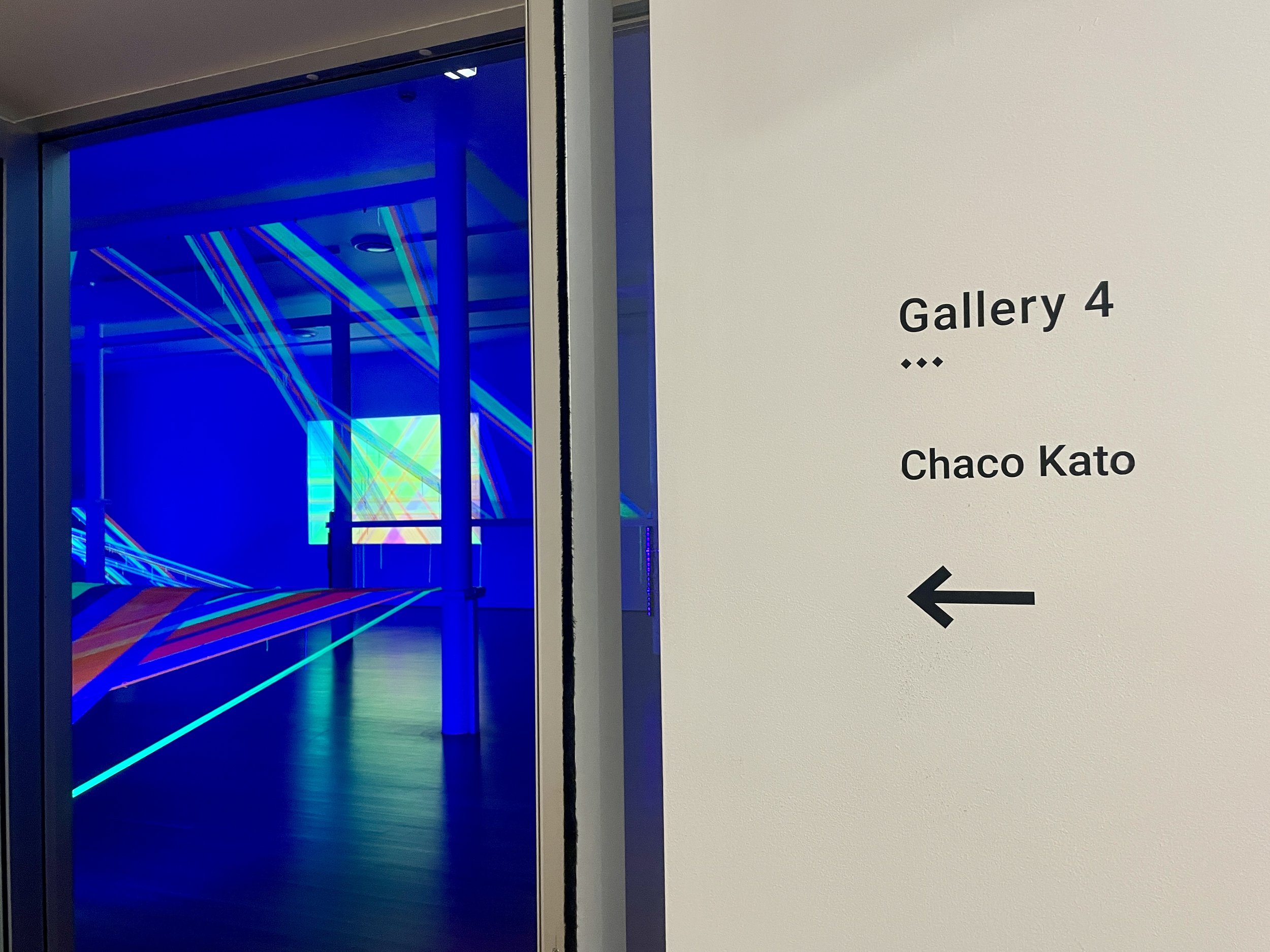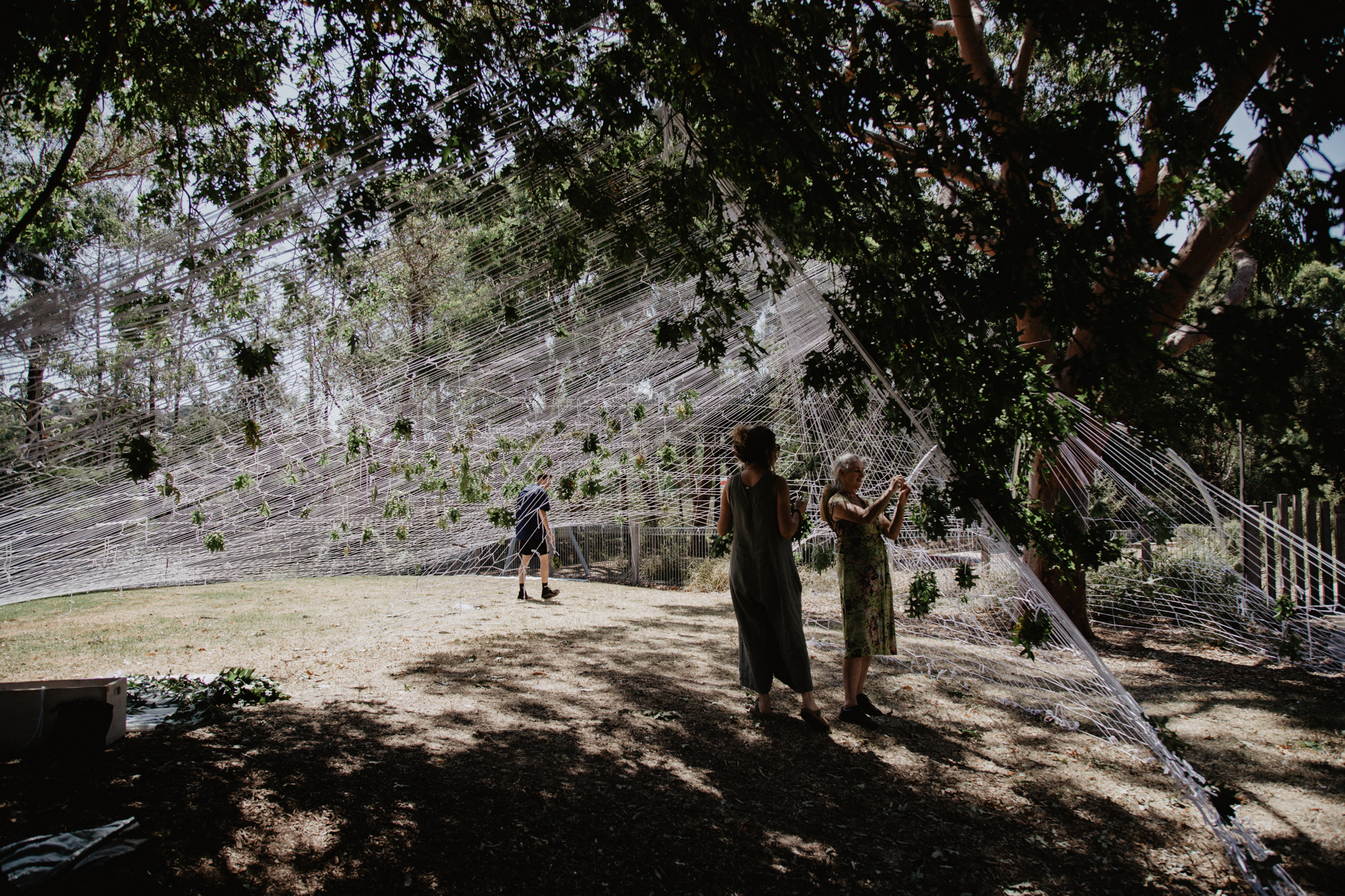Translation version: from the interview Tokyo Biennale
ABOUT SLOW ART COLLECTIVE
chaco kato
──Please tell me what prompted you to launch the Slow Art Collective.
The Slow Art Collective was founded in 2009. At that time, I had just finished graduate school and embarked on what could be considered the "traditional" path in the art world—joining a gallery, producing artwork, and presenting it there.
However, I began questioning the conventional approach of simply creating works, showcasing them in white cube galleries, and hoping for recognition from those who understand. The process of creating, selling (if successful), and then storing the remaining pieces in a warehouse felt incredibly stifling to me. I started to wonder if there should be a new model or new paradigm...
I wanted to engage with a broader societal context beyond the closed confines of galleries and interact with people who wouldn't typically visit art galleries, just with people in public places.
I experimented with various approaches, and at that time, the Slow Movement was gaining momentum. I wondered if I could incorporate this philosophy into art—encouraging society and citizens to enjoy art at a slower pace, enriching both art and our society and lives in the process. It was about fostering a culture where viewers don't just passively ‘observe’ art but actively ‘participate’ in its creation, where participation itself becomes art. I wondered if such a thing could be possible.
Ultimately, the impetus for these thoughts came from a practical dilemma: I ran out of storage space for my artwork! The more I produced, the more I struggled with this dilemma. The question of why I kept repeating this cycle grew larger, and my motivation to create dwindled. In other words, as an artist, I needed to be more sustainable.
The concept of Slow Art became one of the answers to the question of how to live sustainably as an artist for the rest of my life.
──Yes, that's the issue many artists face.
Exactly, and that's what I wanted to overcome. Art is at the core of my being; I've invested much time, money, and soul into it throughout my life. If there's no return on what I've invested so far, it's meaningless. I've always wanted to be an artist for life, but with the current situation, I was unsure if that would be possible. Additionally, I have a family, so it would be inconvenient if my house became filled with artwork. I wanted to sustain both my art career and family life, living a fulfilling life as an ordinary, happy citizen while exploring art. That was the most urgent issue for me.
──I see, so that's how you arrived at Slow Art?
At that time, the concept of living sustainably had taken root firmly in Australia. Solar energy had become commonplace, people used vegetable oil instead of gasoline, and DIY culture flourished for homes and gardens. Society was shifting away from the anthropocentric worldview to one where we must consider things from the perspective of the environment and the planet. Seeing this trend, I thought it would be dishonest not to incorporate such a movement into my art practice. I found that new perspective fascinating.
──Could you elaborate on the concept of Slow Art?
In summary, Slow Art is a process of creating art from within life, thus artifying life itself. Here, art refers not just to creating beautiful things or innovative forms but, more importantly, to artistic thinking and philosophy. To address future environmental issues and promote multicultural societies, we need a society capable of artistic imagination and thought. Therefore, society must embrace art as something more commonplace. Even in Western societies, art is often considered surplus; whenever budget cuts are made, art-related education and budgets are among the first to suffer. Unfortunately, this is still the reality. I want people to ‘experience’ the power of art little by little through practice not by just an idea or theory.
── I see, so the way of thinking is crucial. This is part of the discourse of art, isn't it?
Exactly, when you're trying to bring about such a transformation, you need a context and language that can reframe those frameworks. I felt it was a bit different from that time's postmodern or deconstructionist frameworks. So, at that time, I referenced the philosophy of the Slow Movement seen in "Slow Life" and "Slow Food," which was not limited to the context of art but to the philosophy of life, with some relation to Buddhism, eastern philosophy. And that thoroughly reconsidered the direction of my art.
In essence, it's a philosophy of valuing and enjoying the process itself in everything in daily life, believing that these experiences and realisations can change society. This perspective is also synchronised with Deleuze's concept of rhizomatic development.
──So, is the importance of creating slowly also a factor?
Our "slow" doesn't necessarily mean creating slowly. On the contrary, our production is very fast and improvisational. We create to the fullest extent using what's available in the given place and time.
Slow Art encompasses social, spiritual, and economic activities. Instead of artists receiving money as compensation for their work, the focus is on engaging with society, community, and the environment more slowly, allowing art to permeate society more deeply. It's a gradual circular economic activity where society reciprocates value for art.
A society capable of responding to everything in life with artistic flexibility is, above all, a richer society. The degree of penetration of art can be considered a societal indicator. Even when considering various social issues today, I want to emphasise the importance of dealing them with artistic thinking.
Art is at the core of thought and can inspire people in all fields. Such things shouldn't be confined to galleries but should be more prevalent in everyday life in cities and societies. This would create a society where new concepts, perspectives, and ways of seeing things overflow into daily life.
To achieve this, a sustainable society and environment are necessary first and foremost.
──As it stands, even after graduating from art school, few people continue with their artistic endeavours.
Indeed, even in Australia, statistics show that despite graduating from excellent art schools, about 80-90% of people give up on art activities within three years. This is largely due to economic and environmental challenges. It's pretty normal for people to feel they can't pursue art once they have children.
Nevertheless, there are undoubtedly outstanding artists who manage to survive as artists, and some argue that such resilience is a necessary quality for an artist. However, it's a waste when only 10% of those receiving art education continue as artists. Society should aim to create an environment where more artists can survive.
Thirteen years ago when this idea came up, the world was dramatically changing with the emergence of services like Airbnb, Uber or LCC. Regardless of whether they're good or bad, we should consider such new alternative ideas and approaches within art. That in itself is artistic, isn't it? Rather than a hierarchical tree-like structure, a rhizomatic structure (where roots spread out and develop from various places) seems more fitting for today.
While Slow Art may not be the ultimate answer, it's certainly one approach rooted in those ideas.
──Have you been provided with venues for your activities since then?
We haven't particularly advertised, but we've been incredibly fortunate that our activities have continued without interruption for the past 13 years. Although the Australian government's budget for art activities is often the first to be cut, there is still some room.
Recognition for activities like ours has increased significantly, and we've received job offers from various places such as museums, local art centres, schools, universities, public facilities, and gardens.
──So, it's safe to say that choosing the path to Slow Art thirteen years ago was not a wrong decision compared to just presenting in galleries?
Yes, it's really enjoyable to work with various people. Artists tend to be isolated, but for me, working with others while compromising and resolving conflicts seems psychologically very healthy.
However, I'm not denying the value of creating artwork and exhibiting it in galleries as a solo artist myself. My partner, Dylan, also continues to work as a unique sound artist. We bring each other's work into the collective's activities, remixing and reusing them.
Slow Art is not a contradictory approach but a proposal for coexistence and coexistence, allowing artists to continue their activities. People from other fields also sympathize and participate, broadening the scope of activities and expressions, leading to unexpectedly interesting results. And since we reward them for their contributions, it's a rewarding experience for them as well.
I find myself taking on many roles like director or project manager, and I don't necessarily think I have to do everything myself.
──What are the characteristics of Slow Art Collective's activities and artworks?
In our activities, we focus particularly on collaboration, the environment, and engagement with the community. They are 100% site-specific, and the concept of activating the site is crucial. Specifically, we conduct workshops with children, students, and the local community at the site and incorporate them into the exhibition. The meaning of the artwork evolves through these activities.
There is an increasing interest in getting involved, so depending on the scale, we invite young artists, children, and people from various professions to collaborate.
We firmly believe in the unexpected power of collaboration. It's a collaboration with people other than ourselves, with the environment, nature, the city, materials, and budget. It's "environmentally responsive," aiming not to impose our conditions but to adapt to the situation.
There's a great future in the unforeseen, and I feel a great potential in that way of thinking.
──What methods and materials do you use for production?
Our typical works usually involve reusable materials like bamboo. We create a base by weaving macramé ropes into a tower-like structure made of bamboo and then incorporate things we've collected or recycled from the city into it. About half of the process is improvised.
Generally, we create large structures and combine them with Dylan's expertise in interactive sound installations. Both of us place a strong emphasis on improvisation, so many things are created on the spot. We create spaces for play using DIY bows and arrows or sandbags, places to lie down and rest, and provide opportunities for people to freely create bases or hideouts using things they find. Essentially, with simple and basic materials and opportunities, people are delighted to create and play. Everyone says it brings out their childhood spirit.
── What are the impressions of the people who participate?
Everyone enjoys spending time in a way they can't in their daily lives, a bit more slowly. One particularly memorable moment was when we spent a month creating an installation with primary school children. The sixth graders said, "Even though we've been in the same class for six years, we've never had the chance to play and talk so deeply together. We got to know each other so much better, and I really like everyone now."
Also, last year, during an outdoor project at a museum, when we gave pipes and balls to the children, they all (even kids who didn't know each other) spontaneously created a massive "Rube Goldberg Machine." They were all running around for hours, having a great time.
It's a great example of something unexpected happening on site. Not a single person touched their cell phone! (laughs)
──In what way did you get started collaborating with Dylan?
During a period of exploration, I went to see Dylan's exhibition. His work was shockingly interesting and aligned perfectly with the values I had in mind. Since he happened to be there, I approached him, we talked, and asked to work together.
He has the amazing ability to find what's needed, like pulling something out of a random trash can (laughs). You could say our current activities started because he was there at that moment. Meeting him was truly fortunate.
Both of us have families, and involving each other's families in our work has been one of the reasons why things have developed so smoothly.
Our two children, who were preschoolers then, have become reliable art students now and are the primary supporters of the Slow Art Collective. They're always there during preparations and installations. That might be the most significant achievement of the Slow Art Collective! (laughs)
──You also engage in solo activities. What are the characteristics of your solo work?
In my solo work, I often create large architectural installations using threads or strings in an improvisational manner. It's very enjoyable to challenge myself to see what kind of sculptures I can create with just a single thread and how I can collaborate with the environmental conditions of the site. I'm interested in the artistic results brought about by simple mechanical movements like knitting, tying, and weaving.
Using a thin membrane-like structure, I want to create mechanisms that transform the space from within. It's about collaborating with the environment and the place. When you physically engage with it, that's when you truly understand the place with your body. The atmosphere of the space changes, and those moments are just pure joy.
I also incorporate roots of grasses and flowers from gardening and peels and cores of fruits and vegetables into my installations.
──So, your work derives from the concept of Slow Life.
Yes, I'm particularly interested in things that continue to change, so I create various works using materials like plant roots, seaweed, mycelium, vegetable and fruits seeds skins and soil. The time spent composting, gardening, and cultivating mushrooms is the most precious time, which is the essence of Slow Art. I use such materials and records to create my artwork. However, with the hectic nature of daily life, it's hard to achieve a Slow Life (laughs) truly.
But the essence of Slow Life is valuing the process itself. We must enjoy the everyday processes of life.
